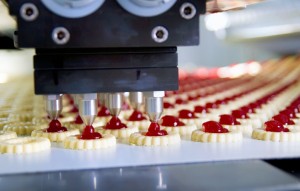New FDA Regulations Create R&D Tax Credit Opportunities For Food Manufacturing
 On September 10, 2015, the Food and Drug Administration released the final preventive controls rules to implement the FDA Food Safety Modernization Act (FSMA). The two new food safety rules aim to ensure the U.S. food supply is safe by shifting the focus from responding to contamination to preventing it.
On September 10, 2015, the Food and Drug Administration released the final preventive controls rules to implement the FDA Food Safety Modernization Act (FSMA). The two new food safety rules aim to ensure the U.S. food supply is safe by shifting the focus from responding to contamination to preventing it.
The new guidelines, identified as the “Preventive Controls for Human Food rule” and “Preventive Controls for Animal Food rule,” embody a major alteration in how the federal government proceeds with food safety. Traditionally, the government carried out a responsive, crisis-based approach. Now, as a consequence of these new rules, a preventive model will become the standard model.
Consequently, the roll-out and implementation of the Food Safety Modernization Act has brought change to all aspects of food and beverage manufacturing. In particular, the regulations will require food manufacturers to highlight potential risks and develop control systems to prevent or minimize identified issues. Ultimately, the new rules affect virtually every facet of the food manufacturing industry and will entail heavy investment in technological improvements for food manufacturers across the “farm-to-table” sequence.
Despite posing as a potential challenge for the food manufacturing industry, the Research and Development (R&D) tax credit opportunities are one means of decreasing the cost acquired by companies in becoming compliant with the new regulations. The R&D Tax Credit is a frequently overlooked tax benefit, with companies often mistakenly believing they don’t qualify. The government lets you deduct the costs of research and experimentation to develop or improve a product, formula, invention, process or technique.
In regards to the new regulations, the R&D tax credits could apply to many of the activities that the food manufacturing industry will need to undertake in meeting the new FDA requirements. The credits are often mistakenly assumed to apply only to the creation of a new product or package, but there are actually a number of ways in which food manufacturing companies can qualify for research tax credits,including:
- Brain-storming about how to approach the quarantining process of contaminated food as a whole;
- Improving facility safeguards to protect against the adulteration of food at various points in the manufacturing process;
- Developing and testing prototypes of new manufacturing equipment or new components for existing equipment to better guard against error; and/or
- Enhancing the functionality of software used by equipment involved in screening out contaminants.
As can be seen from the above, the food manufacturing sector has significantly changed due to the new regulations; bring bringing new opportunities and challenges to business leaders and policy makers. These regulations will demand substantial industry investment to meet the challenges presented by the new rules. This ultimately reveals that the R&D tax credit is not simply an important option for the manufacturing industry to utilize, but one which it would need to use to remain competitively viable.
If you would like more information, contact us today to discuss your eligibility and learn more about how the R&D Tax Incentive may benefit your business. Alternatively, earlier this year Swanson Reed teamed up with Capstan Tax Strategies to provide a free seminar on the tips and tools you need for claiming the R&D tax credit in the manufacturing sector. To learn more, watch the manufacturing webinar on YouTube at: https://www.youtube.com/watch?v=Zqw6sUXZhPg

















